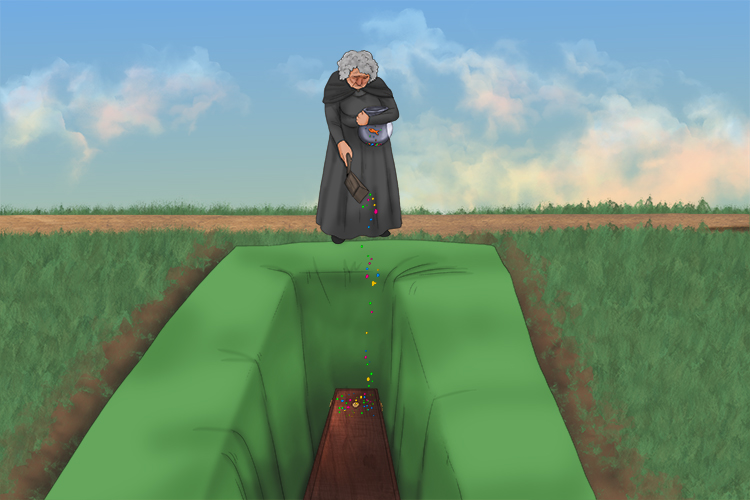Mourning Rituals – Set practices carried out by Jews as a way of grieving for loved ones who have died
To remember the meaning of Mourning Rituals in Judaism, use the following mnemonic:
In the morning she threw grit, her usual (mourning ritual) way of grieving for relatives who have died.

When a Jew learns of the death of a loved one, they make a tear in their clothing. This action is called kriah, a symbol of loss and grief.

Burial should happen as soon as possible after death. In the time before the funeral, the body must not be left alone.
The burial ceremony takes place in a cemetery, not in a synagogue, and the coffin is simple, to show equality.
Funeral services include prayers, psalms and a eulogy – a speech highlighting the deceased person's good deeds and values.
A prayer for those who mourn, known as the Kaddish, is traditionally said by the closest male relative to the deceased on the day of the death.
Stages of mourning include:
Shiva: The first seven days after the burial, during which some mourners do not leave their home.
Avelut: Mourning for a whole year by someone who has lost a parent. During the avelut year they will not attend parties or listen to music.
Yahrzeit: The anniversary of a death, the night before which many Jews light a candle in remembrance of the dead, leaving it to burn for 24 hours.




